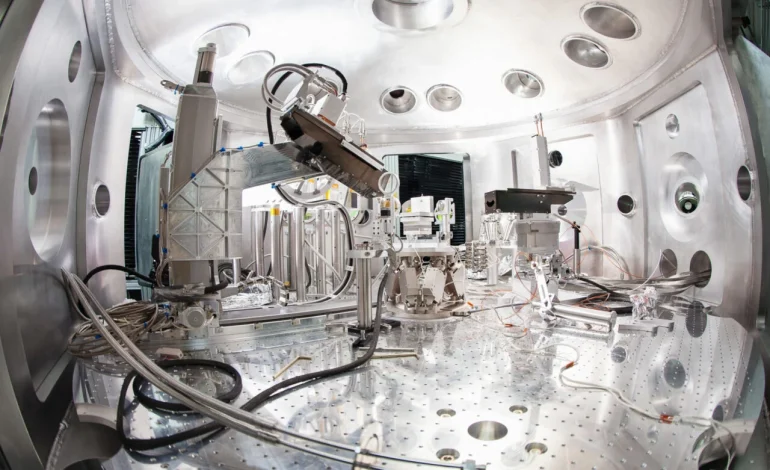Blowing Up Gold with Giant Lasers Just Shook Up a Major Physics Rule

Scientists just melted the rulebook—and gold—at nearly 34,000°F.
In a jaw-dropping experiment at California’s SLAC National Accelerator Lab, physicists blasted gold with giant lasers and accidentally shattered a long-standing law in physics. The result? Gold superheated to 14 times its melting point, lived a few trillionths of a second in a strange in-between state—and broke a decades-old theory wide open.
Using one laser to heat gold and another to zap it with ultra-bright X-rays, scientists captured a direct measurement of its temperature under extreme conditions—something that’s never been done before. The metal reached over 33,000°F (18,700°C) before it finally blew apart.
“It was like… wait, is this right? That’s really hot,” laughed physicist Thomas White, lead author of the study and self-proclaimed fan of blowing stuff up for science.
The experiment’s key tool? SLAC’s Matter in Extreme Conditions (MEC) instrument, designed to mimic conditions found inside stars, nuclear reactors, or even spaceship heat shields.
Until now, physicists believed materials like gold couldn’t be superheated more than three times their melting point (about 1,948°F for gold). They expected any attempt beyond that would trigger what’s called an “entropy catastrophe”—aka, total atomic chaos.
But this experiment blew past that limit by a massive margin, showing that gold can survive in a weird, superheated state for just long enough to study.
And here’s the kicker: it challenges a theory that’s been around for decades.
This breakthrough isn’t just academic. Understanding how matter behaves at scorching temperatures could transform:
- Spacecraft engineering (think: re-entry heat shields)
- Nuclear fusion research (like the National Ignition Facility)
- Astrophysics (what’s really going on inside stars?)
In fact, fusion labs already use gold in key components. Now, scientists can finally measure its exact temperature during high-stakes reactions, rather than estimate it based on indirect effects.
“We now have a thermometer for these insane experiments,” White said.
The team is now applying their method to other materials like silver and iron, with early results looking promising. They’re also exploring how this new technique could be used to study fusion-related materials—something physicists have wanted to do for years.
Meanwhile, co-author Bob Nagler summed it up best:
“Temperature is one of the oldest things humans have tried to understand—but it turns out we’ve never been very good at measuring it in the extreme.”
The original story by Gayoung Lee for Gizmodo.








The latest news in your social feeds
Subscribe to our social media platforms to stay tuned